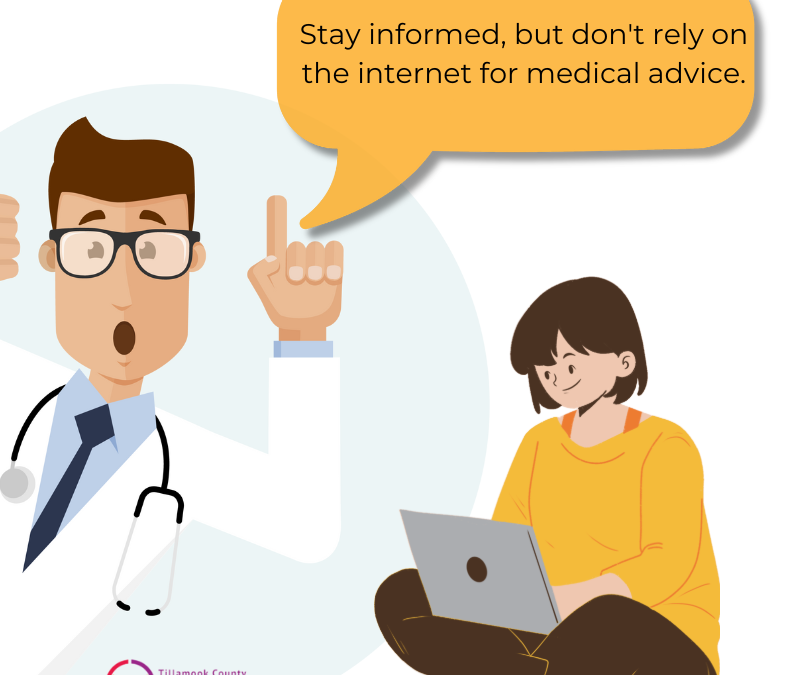
by Guest | May 17, 2024 | Being Well, Featured, Uncategorized
Fortunately, Buzzfeed has never claimed to be able to give you any medical diagnosis. But plenty of other sources on the internet walk the fine line between “this is not medical advice” and “this sure sounds a lot like medical advice”. There’s a quiz for everything, and a “cure” for everything. A problem you didn’t know you had, and the product that can solve it (for three easy payments of $19.95, plus shipping and handling!) Anything and everything to do with your health can be found with a few taps on your phone, so it’s important to recognize how media literacy ties in with health literacy.
Let’s take a step back. About 21% of US adults experience chronic pain, or pain that lasts for three or more months. Millions suffer from conditions that have no known treatment or cure. Our doctors don’t always have the answers we are looking for. After all, they can’t prescribe a treatment that doesn’t exist, or diagnose a condition that they don’t have the evidence for. And so, we strike out on our own determined to find a solution to the pain we carry every day. A solution beyond the scientific boundaries of conventional medical practice. Collectively, these solutions are referred to as alternative medicine.
Alternative medicine has real value to many individuals and cultures. That is not up for debate. For thousands of years, alternative medicine was the only medicine. However, there is potential for significant harm as these practices have expanded from healers utilizing medicinal herbs to Dr. Charlatan on the internet trying to sell you an at-home detox regimen that may very well do more harm than good. Many treatments or devices label themselves as alternative medicine when they are little more than a scam.
Here, health literacy and media literacy collide. Having the ability to recognize what information and products are legitimate and which are deceptive (not to mention potentially harmful and a waste of money) can make a significant difference in your health and quality of life. Let’s go over some questions to ask as you evaluate the validity of medical information online:
- Does it come from a reputable webpage, such as that of a university or hospital
system? Keep in mind that anyone can post deceiving information on social
media, or even on a website of their own. The website URL can give you some
clues. Websites ending in .edu=educational institutions, .gov=government agencies, .org =an organization (often non-profit), .com=commercial, and.net=network. Be particularly wary of .com and .net websites, as they could be hosted by anyone.
- Does it conflict with other reputable sources? If so, consider getting a second (or
third) opinion.
- Does the source profit off of your choice? Are they trying to sell you anything (a
device, a course, a supplement)? If they are promoting a supplement, is it their
own brand that they are trying to sell?
- Is it sensational? Black and white? Health information should be educational, not
headline-grabbing or clickbait.
- Do they have credible sources/citations?
- Is the person or organization making statements credentialed to do so? (Some
titles sound legitimate, but require no training or certification. For example,
anyone can claim to be a “nutritionist”, but “registered dietician” is a protected
title for trained professionals.)
To encourage a safe health practices, consider these tips:
- Avoid long gaps in medical care. Establish with a primary care provider (PCP)
and maintain regular visits. Let them know if anything changes with your health.
- Avoid self-diagnosing. Seek the most accurate diagnosis possible from a trained
physician.
- If you choose to take any supplements, ask your doctor if there is any risk that
they will interfere with your prescription medications. Remember that
supplements are not regulated by the Food and Drug Administration and
sometimes do not contain the product or dosage reflected on the label.
- Don’t change or stop any prescribed medications without consulting your doctor.
- Evaluate how much you are spending on alternative treatments, and whether you
are getting the positive outcomes you are looking for.
What medical treatments or information you choose to follow is ultimately your decision. If alternative medicine provides you with healing and comfort, that’s fantastic! But if you have any questions or concerns about your health, always go to a physician first. Keep up with Tillamook County Wellness’ health literacy campaign to continue learning about how you can play an active role in managing your health. And in the meantime, stick to the TikToks that teach you about gardening, not self-medicating. Be well, Tillamook!
written by Sarah Ermer, MPH, CHES, from Tillamook Family Counseling Center
Resources:
Rikard SM, Strahan AE, Schmit KM, Guy GP Jr.. Chronic Pain Among Adults — United States, 2019–2021. MMWR Morb Mortal Wkly Rep 2023;72:379–385. DOI: http://dx.doi.org/10.15585/mmwr.mm7215a1.
U.S. Department of Health and Human Services. (2024, February 13). Is this legit? accessing valid and reliable health information. National Institutes of Health.
https://nida.nih.gov/research-topics/parents-educators/lesson-plans/legit-accessing-valid-and-reliable-health-information
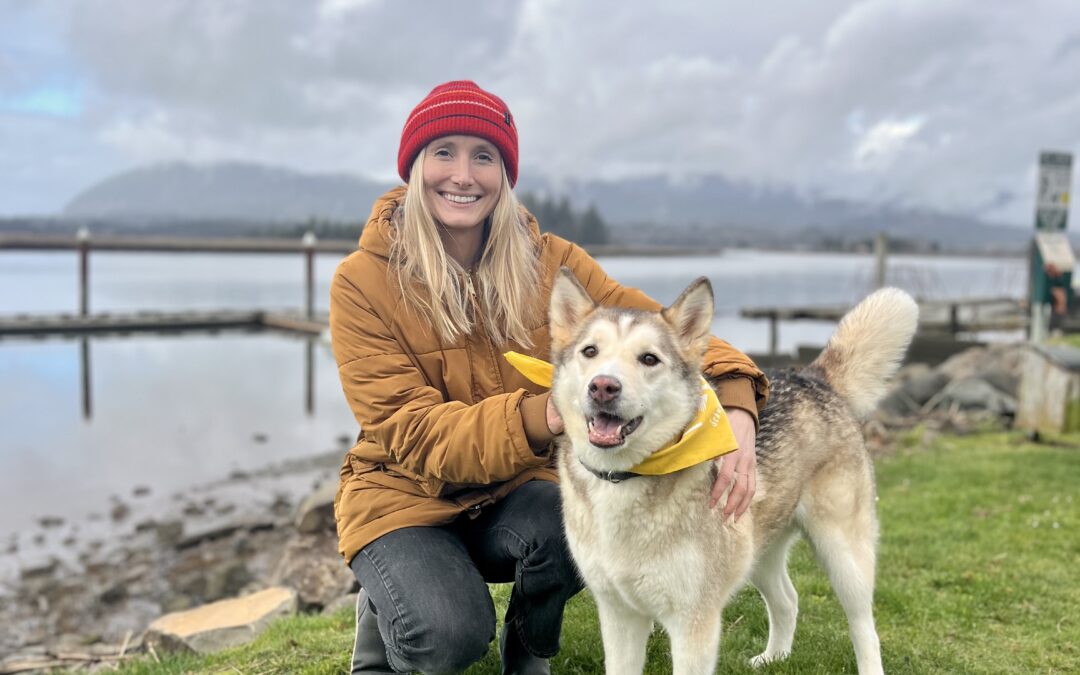
by Guest | Feb 20, 2024 | Being Well, Eat Well, Featured, Uncategorized, Why I'm In, Work Well
“WHY I’M IN …” An interview with Mari Tasche, Oregon Health & Science University
What drew you/your organization to partner with Tillamook County Wellness?
When first introduced to Tillamook County Wellness, I was inspired by the work of the committees and felt that TCW aligned with my passion for improving the wellness and quality of life of others, particularly those made vulnerable by current systems. I have always been actively involved in my community, whether coaching youth soccer or coordinating a community-wide couch to 5k running group. As an exercise physiologist looking to transition into public health and plant my roots on the north coast, TCW provided a great opportunity to understand the region’s needs and get involved in efforts to address community health.
What, if any, changes have you seen come about as a result of this work?
Improving the health and wellness of a county is challenging work and truly takes a village. TCW is a unifying force that brings people and organizations together to share knowledge, leverage resources, and provide support. This strengthens our connections, creates unity, and fosters collective progress for the betterment of our community. I have seen many organizations coordinate and collaborate on projects, programs, and initiatives they might not have otherwise pursued together. This coalition has also taken ownership of the community health needs assessment and improvement plan to address the region’s top health and social needs. Efforts include evaluating and refocusing the work of committees, pursuing or supporting grants, establishing or strengthening partnerships, and broadening community outreach and engagement.
What have you learned from being involved in this work?
I have learned that opportunities are endless if you make the effort to reach out. Many people want to see this county thrive and want to contribute their part to make that happen. It is inspiring and fuels my optimism for this work. I have also learned that this work is like climbing a mountain with no top. It’s endless, but if you enjoy what you are doing, it doesn’t feel like a daunting task- and don’t forget to celebrate the small steps!
What are your hopes for this work as it relates to you/your organization?
My role has continued to evolve since joining a few years ago, and I strive to find my niche and how to best contribute my time and resources to TCW. As I wrap up my master’s degree in public health this fall, I am looking to align my final projects with TCW initiatives and develop relevant content and materials to drive this work forward. As a regionally based employee with the Oregon Rural Practice-based Research Network at OHSU, I aim to pursue future opportunities for cross-over and collaboration.
What are your hopes for this work as it relates to changing community health in Tillamook County.
Changing community health takes a multifaceted and dynamic approach. I hope that TCW continues to address this challenge holistically by strengthening a diverse network with a unified message, comprehensive strategy, and county-wide framework that can meet the needs of every individual and help them live their best, healthy lives.
Is there anything else you’d like to share?
I appreciate being a part of this coalition and look forward to what we can accomplish in the coming years.
For more local health and wellness information, visit www.tillamookcountywellness.org or follow Tillamook County Wellness on Facebook and Instagram.
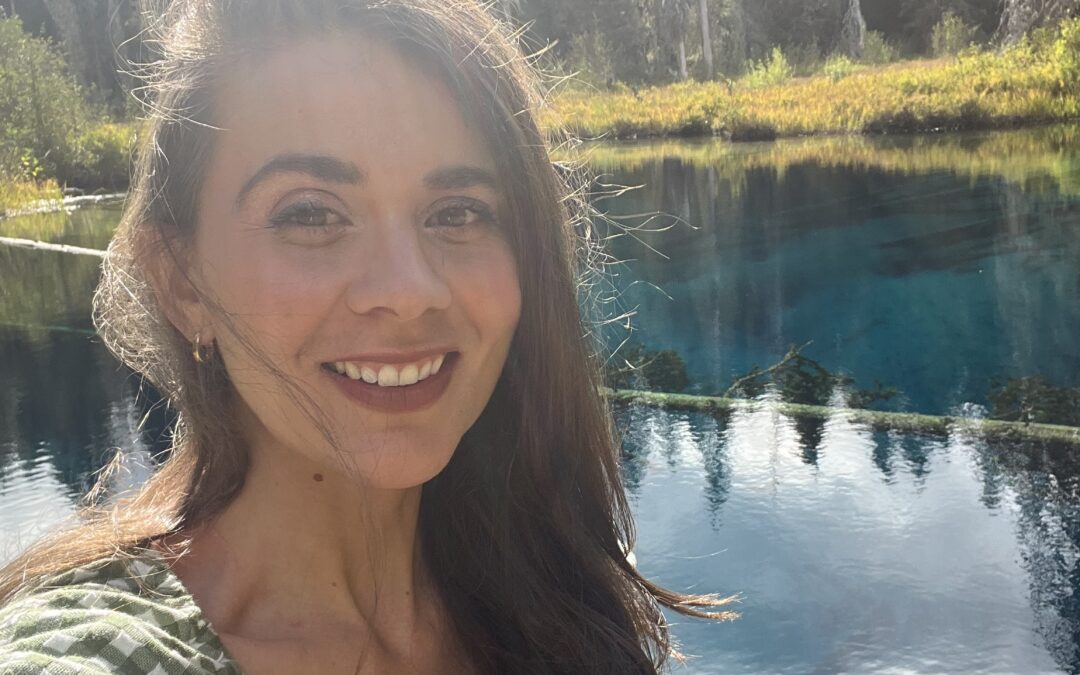
by Guest | Dec 7, 2023 | Being Well, Featured, Why I'm In
Why are you “IN”?
The Tillamook County Wellness “Why I’m In” interview series highlights our community partners and what has inspired and motivated them to work toward the common goal of improving community health.
“WHY I’M IN …” An interview with Janeane Krongos, Prevention Specialist, Tillamook Family Counseling Center (TFCC). Janeane is the co-chair of the health and promotion committee.
What drew you/your organization to partner with Tillamook County Wellness?
Janeane: Being part of the Tillamook County Wellness (TCW) Health Promotion committee was a natural choice for me, because TCW and I have a shared goal of improving community health through increasing protective factors. Protective factors are characteristics or attributes that can help to lower the risk of negative health outcomes such as diabetes, substance misuse, underage substance use prevention, problem gambling, and suicide prevention. Examples of protective factors include access to basic needs (food and housing), social connections, connection to the community, access to resources, access to healthcare, coping skills, and problem-solving skills.
What, if any, changes have you seen come about as a result of this work?
Janeane: One change that I have seen since I have been part of this group is an increased focus on prevention topics (substance misuse, problem gambling prevention, and suicide prevention) and mental health in TCW content on the website and social media. I think this is a beneficial change and I hope to see more content on these topics.
What have you learned from being involved in this work?
Janeane: I am relatively new to the Tillamook County, I moved to the community in March 2020. Being part of the committee has allowed me to learn about Tillamook County directly from committee members who know the area well. In the monthly meetings I had opportunities to meet with people who are active in the community. Additionally, I have learned about local places that I can go to exercise (local parks, hiking trails, beaches, & facilities), local organizations, community resources, and community events.
What are your hopes for this work as it relates to you/your organization?
Janeane: The organization that I work for (Tillamook Family Counseling Center) has played an active role in TCW since its inception. I hope that they will continue to play an active part in TCW. As for myself, I hope that I will continue to play an active role in TCW. I am the current co-chair of the Health Promotion committee. I enjoy having this role. I respect the members of the group, enjoy the meetings, and enjoy having opportunities to share prevention messaging and share helpful resources in TCW content. Since I have been part of this committee, I have had opportunities to write blogs on a variety of topics including problem gambling prevention, safe medication practices, suicide prevention, and mental health.
What are your hopes for this work as it relates to changing community health in Tillamook County.
Janeane: One hope that I have for the future, is for more community members to get involved in TCW. Currently TCW has around 80 partners who volunteer their time and skills and around 50 community partner organizations who allow staff to attend the meetings. A person can get in TCW in whatever way that works best for them. Examples of ways a person can get involved include: joining a TCW committee(Health Promotion, Access to Care, Access to Physical Activity, and Workplace Wellness), participating in TCW campaigns(This Way to Well-Being), attending TCW programs(walking groups, workshops, or events), sharing your ideas by filling out surveys, following TCW on social media, engaging with TCW social media post (like, share, and comment), subscribing to the TCW newsletter, or making a donation to TCW on the website.
What are your hopes for this work as it relates to changing community health in Tillamook County?
I hope that TCW continues to have strong partner support and continues to generate relevant and trusted health inspiration content.
Other wellness questions? Email us at info@tillamookcountywellness.org. For more local health and wellness information, visit www.tillamookcountywellness.org or follow Tillamook County Wellness on Facebook and Instagram.
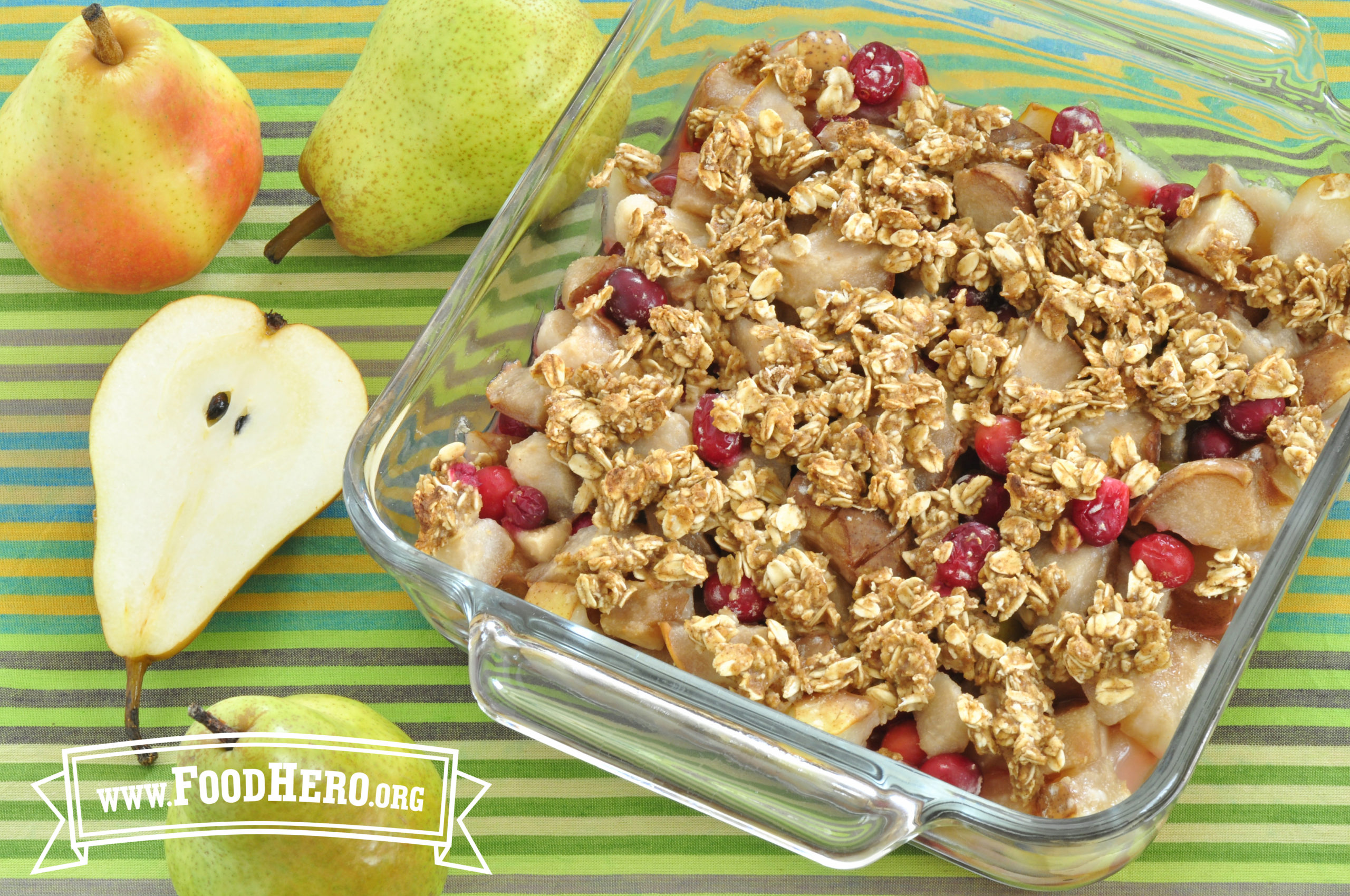
by Guest | Nov 12, 2020 | Recipes
Prep and Cook Time: 30 minutes
Ingredients
- ½ cup old fashioned rolled oats
- 1 tablespoon brown sugar
- 2 tablespoons flour
- ¼ teaspoon cinnamon
- 2 tablespoons applesauce
- 4 cups pears, cubed (about 3 pears)
- 1 cup cranberries, fresh or frozen
- 1 tablespoon cornstarch
Instructions
- In a medium bowl, combine oats, brown sugar, flour, cinnamon and applesauce.
- Combine pears, cranberries and cornstarch in an 8×8 inch baking dish. Sprinkle with oat mixture.
- Bake uncovered at 400 degrees until juices are bubbling and topping is browned, about 20 minutes.
- Refrigerate leftovers within 2 hours.
Recipe and Photo Source: https://foodhero.org/recipes/pear-and-cranberry-crisp
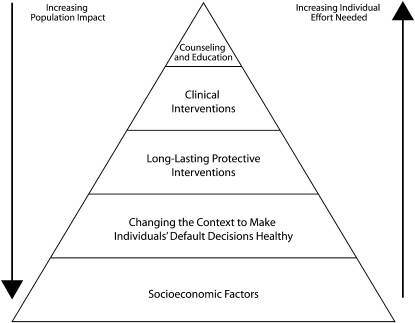
by Michelle | Sep 18, 2020 | Move Well
Two-for-one sales are always popular. We get twice as much for the cost of one. What if we can get a three-for-one deal? Wouldn’t that be awesome? In healthcare, this is referred to as the “Triple Aim.” Developed by the Institute for Healthcare Improvement, this framework sets a goal of improving population health, as well as quality of individual care, while at the same time reducing healthcare costs.
It may sound too good to be true, but great strides are being made to accomplish the Triple Aim. This isn’t just a good idea. It is necessary, given escalating rates of preventable illness and healthcare costs. Because the factors that influence health extend beyond the healthcare system, other sectors must become part of the “Triple Aim” solution. Government, schools, businesses, faith-based and civic organizations are just some of the partners that can help.
The Centers for Disease Control and Prevention (CDC) has developed the Health Impact Pyramid, a resource that helps communities understand how to get the best return on investment when working to improve population health. Traditionally, most of the time and money invested in helping people get or stay healthy happened at the top of the pyramid in the form of counseling, education and clinical interventions. While these are important strategies, they require more individual effort and often do not fully address the underlying, root causes affecting individual health.
Research has shown that investments in factors that influence a person’s education, employment and housing status, known as socioeconomic factors, can achieve a much higher rate of return. For example, community investment in early childhood development and care impact a child’s success in school and this will likely lead to a better job down the road. Education and employment status are associated with better health in adulthood.
The second level of the pyramid relates to making default choices healthier where people live, work and play. If we live close to a store that sells fruits and vegetables, we tend to eat more of those foods than someone who must travel a long distance to purchase them. Similarly, conveniently located sidewalks, bike lanes and trails make being active easier. Research shows that people who live in walkable communities are more active and healthier.
Continuous, paved pathways provide safe, accessible opportunities for all citizens to become more physically active. Currently, there are few places like this in Tillamook County. Kilchis Point Reserve, near Bay City, is a popular trail. Another good example is Bud’s Fitness Trail at Tillamook Junior High School. These paths allow people of all abilities to enjoy being active outdoors and accommodate strollers, walkers and wheelchairs. These off-road paths, such as the planned Crosstown Connections rail spur between Goodspeed Park & Hoquarton Slough, allow families with small children to recreate safely, even allowing a young child to skate, ride a bicycle or scooter – all important activities for physical development and social connectivity.
These paths are free to the public and open year-round. The return on investment comes from the increased health and community livability these resources provide. Development of the proposed Salmonberry Rail Trail within our coastal communities stands to not only generate significant economic development but also positive community health benefits.
By visiting a local recreational area, you can check off a square on your Explore Your Outdoors BINGO card to enter to win a prize. Cards are available on-line at https://tillamookcountywellness.org/move-well/great-places-to-get-moving/ or can be picked up at NCRD, the Y and Inn at Cape Kiwanda. You won’t want to miss out – the adventure ends September 25th!
For more local health and wellness information, follow Tillamook County Wellness on Facebook, Instagram and Twitter.
Author: Michelle Jenck, TC Wellness Coordinator





